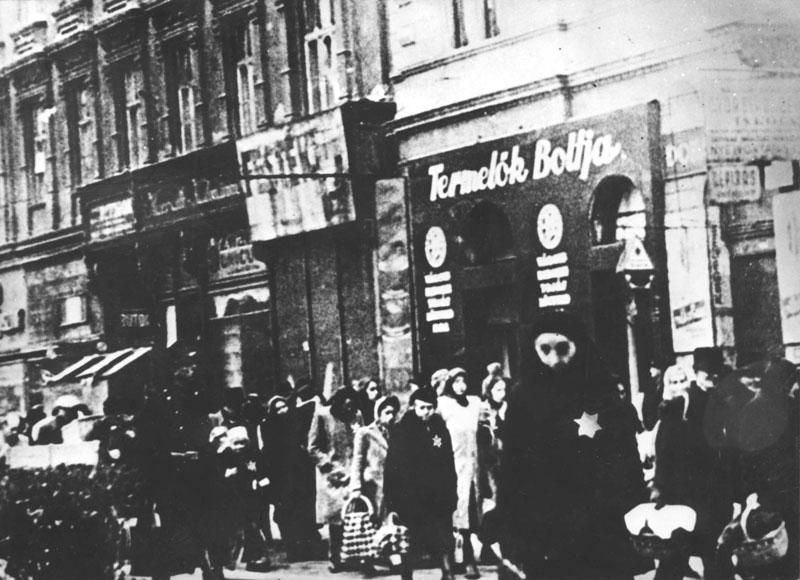Approximately 200,000 Jews lived in Budapest and 825,000 in all of Hungary before World War II. Hungary was allied with Nazi Germany, but despite widespread antisemitism and anti-Jewish legislation, the country remained relatively safe for Jews until it was occupied by Germany on 19 March 1944. Then the situation changed dramatically. Despite its being the end of the war, between May and July 1944 - in a period of 56 days – the Germans and Hungarians deported close to 500,000 Jews from the Hungarian provinces to Auschwitz. By the end of July, Budapest was virtually the only Jewish community that remained in Hungary.
In June 1944, the Hungarian authorities ordered the Jews of Budapest into over 2,000 designated buildings scattered throughout the city. The buildings were marked with Stars of David. Diplomats from the Swedish, Swiss, Vatican and other legations organized protective passports and safe houses; thus saving tens of thousands of Jews.
In October 1944 the fascist Arrow Cross party seized power and instituted a reign of terror in Budapest. Hundreds of Jews were shot; others were drafted for brutal forced labor. On November 8, 1944, the Hungarians concentrated more than 70,000 Jews – men, women, and children in the Ujlaki brickyards in Obuda. From there they were taken on a forced march to camps in Austria. Thousands were shot and thousands more died as a result of starvation or exposure to the bitter cold. The remaining Jews in Budapest – especially those who didn't have protective papers of neutral countries – were ordered by the Arrow Cross into a closed ghetto. Between December 1944 and the end of January 1945, the Arrow Cross took as many as 20,000 Jews from the ghetto, shot them along the banks of the Danube, and threw their bodies into the river.
On 13 February 1945 when the Red Army liberated Budapest, there were 100,000 Jewish survivors in the city.







